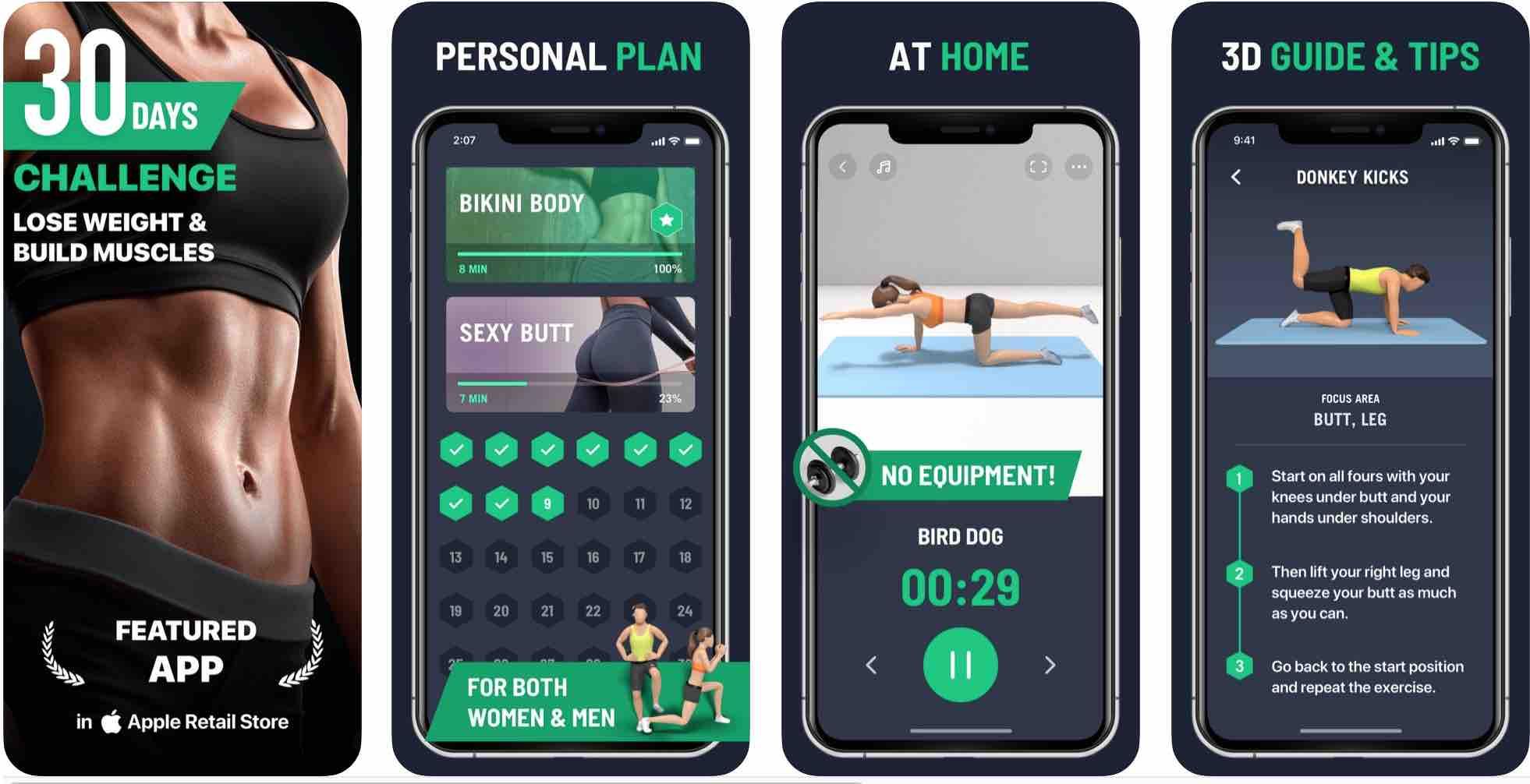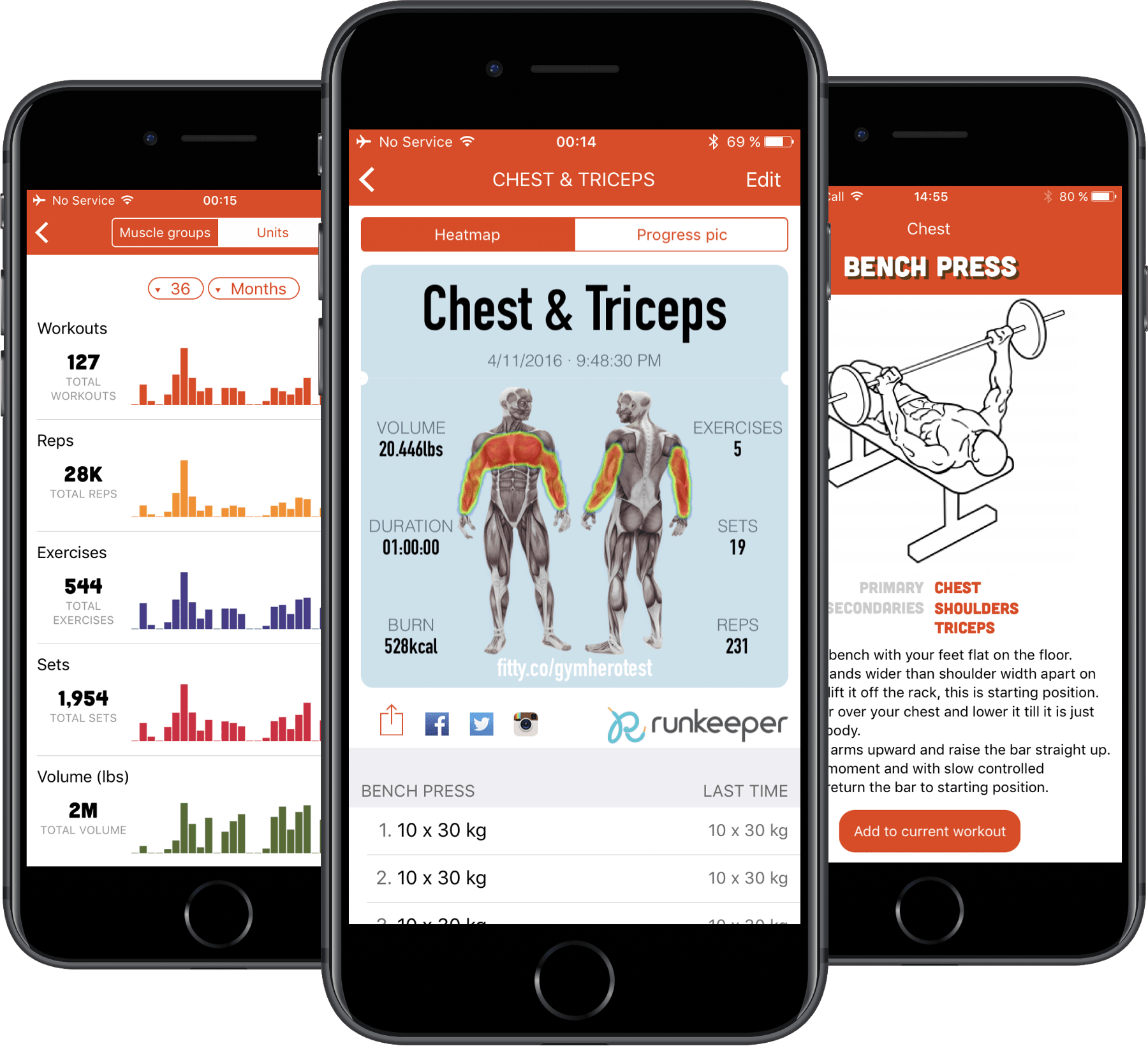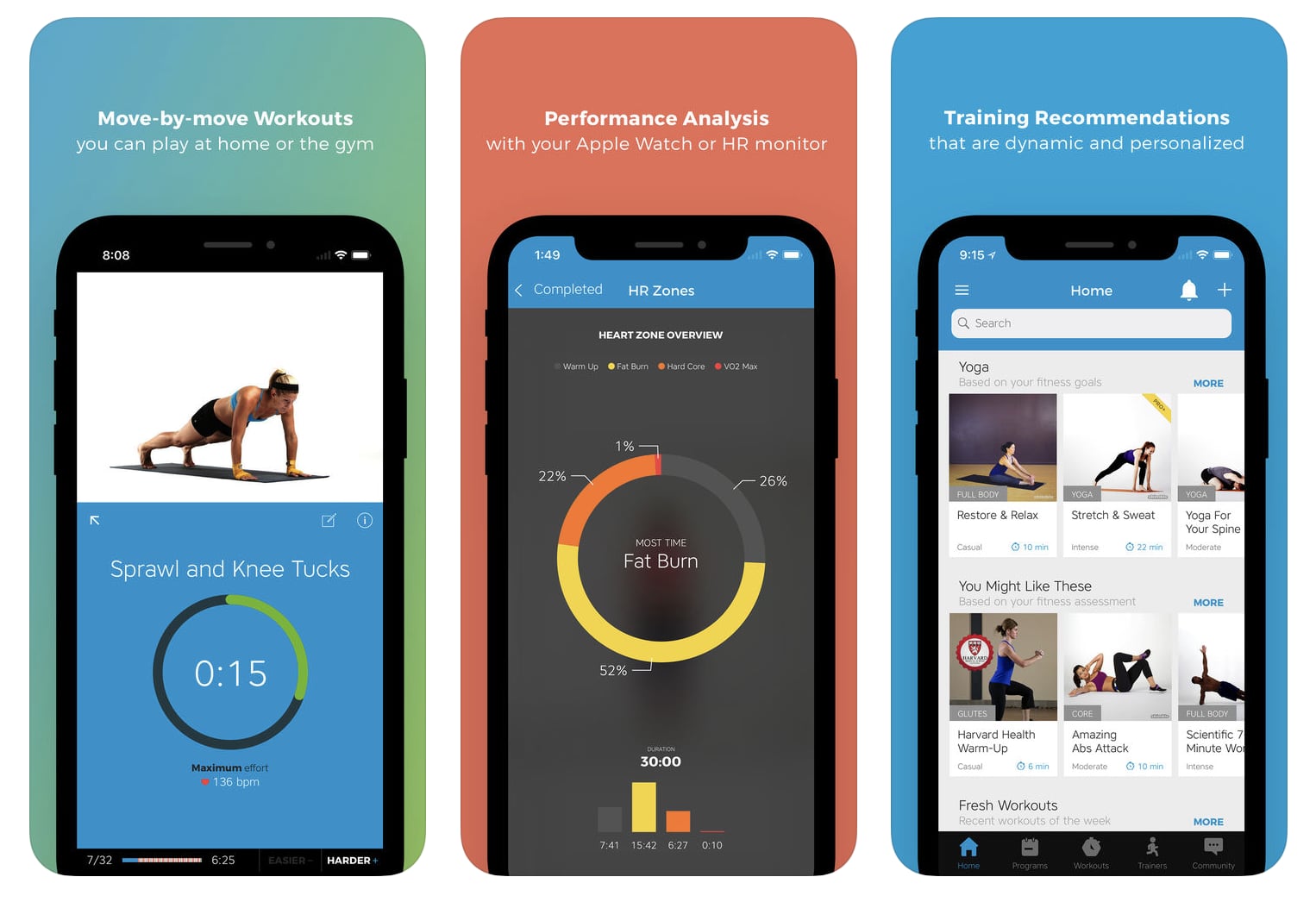Workout apps have transformed the fitness landscape, empowering individuals to embark on personalized fitness journeys with unparalleled convenience and motivation. From meticulous tracking to tailored workouts and a thriving sense of community, these apps are redefining the way we approach our health and well-being.
With advanced metrics, engaging challenges, and seamless integration with other devices, workout apps provide a comprehensive solution for fitness enthusiasts of all levels. They not only monitor progress but also foster a sense of camaraderie, making fitness a more enjoyable and sustainable pursuit.
Fitness Tracking and Monitoring
Workout apps provide comprehensive fitness tracking capabilities, enabling users to monitor their progress and stay motivated. These apps employ various methods to collect and visualize data, helping users understand their fitness levels and make informed decisions.
Metrics and Data Visualization
- Calories Burned:Apps track calories burned during workouts, providing insights into energy expenditure.
- Heart Rate:Monitoring heart rate helps users stay within target zones and optimize their workouts.
- Steps Taken:Apps track steps taken throughout the day, encouraging physical activity and goal setting.
Graphs and Charts
- Progress Charts:Visualize changes in metrics over time, showing trends and improvements.
- Activity Logs:Display a detailed history of workouts, including duration, intensity, and other relevant data.
Comprehensive Fitness Tracking Apps
- Apple Fitness:Provides comprehensive fitness tracking, including activity tracking, heart rate monitoring, and workout recommendations.
- Google Fit:Tracks steps, calories burned, and heart rate, and integrates with other fitness devices and apps.
- Fitbit:Offers advanced sleep tracking, heart rate monitoring, and personalized fitness insights.
Workout Customization and Variety

Workout apps provide personalized workout plans based on user goals, fitness levels, and preferences. They offer a range of exercises and workout types, catering to different fitness niches and preferences.
Range of Exercises and Workout Types
Workout apps provide a diverse range of exercises and workout types, including:
- Cardio exercises: running, cycling, swimming, jumping rope
- Strength training exercises: bodyweight exercises, dumbbell exercises, barbell exercises
- Flexibility exercises: yoga, Pilates, stretching
- Recovery exercises: foam rolling, massage, meditation
Workout Customization
Workout apps use algorithms to create personalized workout plans based on user goals, such as:
- Weight loss
- Muscle gain
- Improved endurance
- Increased flexibility
These plans consider factors such as user fitness level, available equipment, and time constraints.
Specific Fitness Niches and Preferences
Many workout apps cater to specific fitness niches or preferences, such as:
- Home workouts
- Gym workouts
- Outdoor workouts
- Pregnant women
- Seniors
Community and Motivation

Workout apps cultivate a sense of community among users, fostering motivation and support. Social features, challenges, and leaderboards create a sense of camaraderie and accountability.
Social Features
Social features, such as user profiles, messaging, and group chats, connect users with similar fitness goals. They can share progress, offer encouragement, and engage in virtual workouts together. This interaction creates a supportive environment that promotes motivation and accountability.
Challenges and Leaderboards
Challenges and leaderboards encourage friendly competition and provide a sense of accomplishment. Users can set goals, track their progress, and compare themselves to others. This gamification aspect adds excitement and drives users to push their limits.
Examples of Supportive Communities
- Strava:A social fitness app that allows users to track their activities, share photos, and join challenges.
- Peloton:An indoor cycling and fitness platform that offers live classes with instructors and a supportive community of riders.
- Nike Run Club:A running app that provides guided runs, challenges, and a global community of runners.
Integration and Compatibility
Workout apps seamlessly integrate with various devices and platforms to enhance the user experience. By connecting with wearables, smart home devices, and social media, these apps provide comprehensive fitness tracking, personalized workouts, and community support.
Compatibility with wearables like smartwatches and fitness trackers enables real-time monitoring of metrics such as heart rate, steps taken, and calories burned. This data can be seamlessly synced with the workout app, providing a holistic view of fitness progress.
Integration with Third-Party Services
Workout apps integrate with third-party services to offer additional features and functionality. This includes:
- Nutrition tracking apps for calorie counting and meal planning
- Sleep monitoring apps for insights into sleep patterns
- Music streaming services for workout playlists
These integrations provide a comprehensive ecosystem for fitness and well-being, allowing users to manage all aspects of their health and fitness journey within a single platform.
App Design and User Interface

The design and user interface (UI) of workout apps play a crucial role in app engagement and satisfaction. Users are more likely to stick with apps that are easy to navigate, visually appealing, and provide a seamless user experience.
Key design elements to consider include:
- Navigation:Clear and intuitive navigation allows users to easily find the features and content they need.
- Layout:A well-organized layout helps users quickly scan information and identify key elements.
- Visual appeal:A visually appealing design with engaging colors, typography, and graphics enhances the overall user experience.
Apps with exceptional user experience often follow these design principles:
- Simplicity:Apps should be easy to understand and use, with minimal clutter or distractions.
- Consistency:Design elements should be consistent throughout the app, ensuring a seamless experience.
- Feedback:Apps should provide clear feedback to users’ actions, such as progress updates or error messages.
Examples of apps with excellent UI include Nike Training Club, Peloton, and MyFitnessPal. These apps feature intuitive navigation, visually appealing designs, and personalized experiences that contribute to their popularity and high user satisfaction.
Cost and Value Proposition
Workout apps vary in pricing models, ranging from free to premium subscriptions. The value proposition of paid apps often includes additional features, personalized workout plans, and access to exclusive content.
Free apps typically offer basic tracking and workout options, while paid apps provide more comprehensive features such as advanced analytics, personalized training programs, and access to a wider library of exercises.
Paid Apps vs. Free Apps
- Paid Apps:Offer a wider range of features, personalized training plans, and access to exclusive content. They are suitable for individuals seeking a comprehensive and tailored workout experience.
- Free Apps:Provide basic tracking and workout options, suitable for beginners or those looking for a no-cost option. However, they may lack advanced features and personalized guidance.
Evaluating Cost-Effectiveness, Workout apps
To determine the cost-effectiveness of a workout app, consider the following factors:
- Individual Needs:Assess your fitness goals and whether the app’s features align with them.
- Features and Value:Compare the features offered by different apps and evaluate their value relative to the cost.
- Long-Term Commitment:Consider the cost of long-term subscriptions and whether you are likely to use the app consistently.
- Return on Investment:Estimate the potential benefits of using the app, such as improved fitness, increased motivation, and reduced risk of injury.
Future Trends and Innovations
The workout app market is constantly evolving, with new trends and innovations emerging all the time. Some of the most promising areas of development include:Artificial intelligence (AI) is being used to power a variety of new features in workout apps, such as personalized workout recommendations, real-time feedback, and progress tracking.
AI can also be used to create virtual workout buddies that can provide motivation and support.Virtual reality (VR) is another technology that is expected to have a major impact on the workout app market. VR can be used to create immersive workout experiences that transport users to different locations or allow them to interact with virtual trainers.Other emerging technologies that could have a significant impact on workout apps include augmented reality (AR), wearable fitness trackers, and smart home devices.
AR can be used to overlay workout instructions onto the real world, while wearable fitness trackers can track progress and provide feedback. Smart home devices can be used to control workout equipment and provide motivation.As these technologies continue to develop, we can expect to see even more innovative and engaging workout apps emerge.
These apps will make it easier than ever to get fit and stay healthy.
AI-Powered Workout Apps
AI-powered workout apps are becoming increasingly popular, as they offer a number of benefits over traditional workout apps. These apps use AI to track your progress, provide personalized workout recommendations, and offer real-time feedback. Some of the most popular AI-powered workout apps include:
Peloton
Peloton offers a variety of live and on-demand workout classes led by expert instructors. The app uses AI to track your progress and provide personalized workout recommendations.
Nike Training Club
Nike Training Club offers a library of over 185 workouts, all of which are designed by Nike trainers. The app uses AI to track your progress and provide personalized workout recommendations.
BetterMe
BetterMe is a comprehensive fitness app that offers personalized workout plans, nutrition advice, and progress tracking. The app uses AI to track your progress and provide personalized workout recommendations.AI-powered workout apps are still a relatively new technology, but they have the potential to revolutionize the way we work out.
These apps offer a number of benefits over traditional workout apps, including personalized workout recommendations, real-time feedback, and progress tracking. As AI continues to develop, we can expect to see even more innovative and engaging AI-powered workout apps emerge.
Ending Remarks

As technology continues to advance, workout apps are poised to become even more sophisticated, incorporating cutting-edge innovations like artificial intelligence and virtual reality. By providing personalized guidance, fostering a supportive community, and leveraging the latest advancements, workout apps will continue to play a pivotal role in shaping the future of fitness.
Essential Questionnaire: Workout Apps
Are workout apps suitable for beginners?
Yes, many workout apps offer beginner-friendly programs and guidance to help individuals start their fitness journey safely and effectively.
Can workout apps help with weight loss?
Yes, some workout apps incorporate calorie tracking, nutrition guidance, and tailored workouts designed to support weight loss goals.
Do workout apps require a subscription?
While some workout apps are free, many offer premium subscriptions with additional features such as personalized workout plans, exclusive content, and access to fitness experts.
